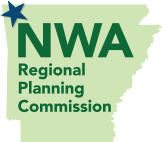Environmental Justice
Environmental Justice (EJ) is a process that ensures that the minority and low-income populations are not excluded from policy-setting or decision making processes with regards to transportation and are also not negatively impacted by environmental burdens.
The framework for the approach to environmental justice is found in Title VI of the 1964 Civil Rights Act. The Executive Order 12898, ‘Federal Actions to Address Environmental Justice in Minority Populations and Low-Income Populations’ was signed on February 11, 1994. The Presidential memorandum accompanying EO 12898 identified Title VI of the Civil Rights Act of 1964 as one of several federal laws that should be applied ‘to prevent minority communities and low-income communities from being subject to disproportionately high and adverse environmental effects.’ According to the U.S. Department of Justice, “the core tenet of environmental justice – that development and urban renewal benefiting a community as a whole not be unjustifiably purchased through the disproportionate allocation of its adverse environmental and health burdens on the community’s minority – flows directly from the underlying principle of Title VI itself”. The NWARPC Title VI Program is found at this link.
The Executive Order identifies minority populations as belonging to any of the following groups:
- Black – a person having origins from any of the black racial groups of Africa;
- Hispanic or Latino – a person of Mexican, Puerto Rican, Cuban, Central or South American, or other Spanish culture or origin, regardless of race;
- Asian-American – a person having origins in any of the original peoples of the Far East, Southeast Asia, or the Indian subcontinent;
- American Indian and Alaskan Native – a person having origins from any of the original people of North America, South America (including Central America) and who maintain cultural identification through tribal affiliation or community recognition: or
- Native Hawaiian and Other Pacific Islander – people having origins in any of the original peoples of Hawaii, Guam, Samoa, or other Pacific Islands.
- Minority population means any readily identifiable groups of minority persons who live in geographic proximity, and if circumstances warrant, geographically dispersed/transient persons (such as migrant workers or Native Americans) who would be similarly affected by a proposed DOT program, policy of activity.
The Executive Order defines low-income populations as those whose household incomes are at or below the U.S. Department of Health and Human Services poverty guidelines. There are three fundamental environmental justice principles:
- To avoid, minimize, or mitigate disproportionately high and adverse human health and environmental effects, including social and economic effects, on minority populations and low-income populations.
- To ensure the full and fair participation by all potentially affected communities in the transportation decision-making process.
- To prevent the denial of, reduction in, or significant delay in the receipt of benefits by minority and low-income populations.
NWARPC’s activities with regard to Environmental Justice are described in detail in two documents: the Public Participation Plan (PPP) and the Limited English Proficiency Plan (LEP).
The mobility needs of minority populations are identified through engagement efforts, data collection, and analysis of available Census data, public comment, and other available sources. The policy and guidance for public engagement is established in the NWARPC Public Participation Plan. NWARPC’s policy for public engagement includes activities and outreach efforts such as soliciting the opinions of those under-served by existing transportation systems, including but not limited to, the transportation disadvantaged, minorities, elderly, low-income households, and people with disabilities. Also, NWARPC is committed to periodically reviewing adopted public comment processes to determine their effectiveness in assuring that the process provides full and open access to all, through surveys, public meetings, open houses, public notices, website posting, emails and public comments.
Data analyses using GIS and the Northwest Arkansas Travel Demand Model are key techniques used to identify and target under-represented populations. NWARPC utilizes data for planning products and can identify other population groups by sex, age, persons per square mile, and persons over the age of 65, disabled population, zero car households, employment density and other population characteristics as needed.
The NWARPC’s efforts in reaching people who have not been traditionally participating in the transportation process include translation and publication of all the public participation notices, surveys or announcements in Spanish on both the NWARPPC website and the printed local media. NWARPC holds all of the public input meetings in public/community locations that were handicap accessible and accessible through public transit and pedestrian/bike facilities, such as public libraries or community centers.
The following measures were used to identify EJ populations in relation to transportation projects:
- Gathering and analyzing most recent Census Bureau’s data, as well as the most recent available American Community Survey (ACS) five-year estimates to depict the concentration and distribution of the minority and low-income populations across the Metropolitan Planning Area.
- Overlaying the 2045 Metropolitan Transportation Plan (2045 MTP) future road network with the population distribution estimates from the ACS to help determine where resources should be directed and also recognize if environmental justice communities are adversely impacted or denied the benefits of the anticipated projects.
- Creating GIS maps and analysis of potential transit routes and stops that the two transit agencies in the region are planning in order to identify where minority and low income population are concentrated in relation to these future routes.
- Coordinating with the communities that adopted the Northwest Arkansas Regional Bike and Pedestrian Master Plan and the Connect Northwest Arkansas Transit Development Plan in assisting them in the process of developing pertinent data and maps to identify areas of planned trails that are accessible to minority and low income populations.
Minorities Distribution
Minority distribution maps, such as the ones featured in Chapter 5 – Environmental Justice of the 2045 Metropolitan Transportation Plan display areas of higher concentration of populations considered to be of minority ethnicity in Benton, Washington Counties, and a portion of McDonald County, MO. These include African-American, Asian-American, Hawaiian and Other Pacific Islands population, Hispanic population and Native American population.
Benton County
Higher concentrations of minorities in Benton County can be found east of Lowell and Rogers, south of Bentonville, the eastern part of Centerton and north of Siloam Springs.
Washington County
The highest distribution of minorities in Washington County can be found in the cities of Springdale and Fayetteville. The tracts east of Springdale have the highest concentration of minority population in the two-county region.
Portion of McDonald County
In the McDonald County portion of the MPA, the minority population concentration is represented in the western tracts, mainly the city of Pineville, MO.
Analysis
An analysis of whether transportation projects either under-served or unduly impacted minority groups was performed by overlaying the developed list of financially constrained projects over a map depicting concentrations of minority groups. It was determined that the minority populations were neither under-served nor disproportionately impacted by adverse impacts.
Low-income Distribution
The distribution of low-income population can be identified represented in a map found in Chapter 5 – Environmental Justice of the 2045 Metropolitan Transportation Plan . The highest percentages of low-income tracts are in the cities of Fayetteville, Johnson, Siloam Springs and Pineville, MO; an area east of Springdale; and in northeastern Rogers. Other high percentage of low-income population is located in the southwestern part of Washington County.

